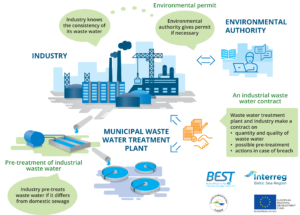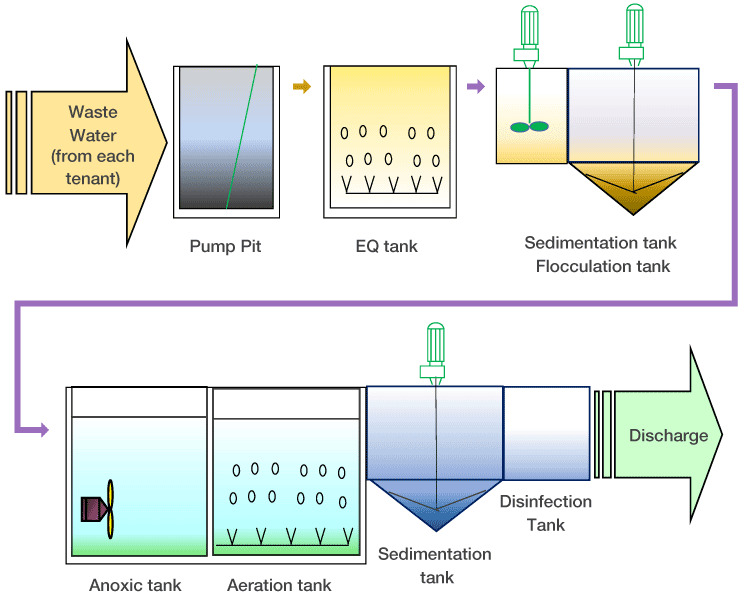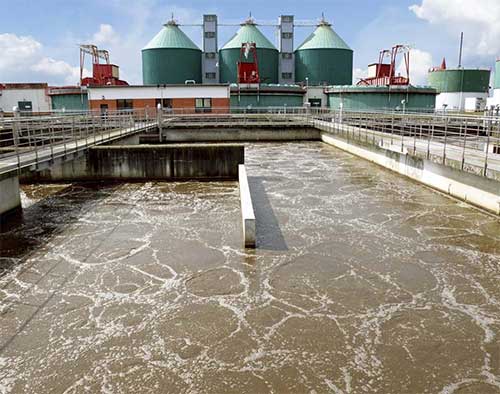Industrial Waste Water Treatment-- Boost Effectiveness with Custom-made Water Treatment Solutions
Wiki Article
Technologies and Breakthroughs in Industrial Waste Water Therapy Technologies
The landscape of industrial wastewater treatment is undergoing a transformative change, driven by developments that improve both performance and sustainability. Emerging modern technologies, such as membrane bioreactors and microbial gas cells, are redefining pollutant removal procedures while contributing to energy generation. Furthermore, source healing methods are gaining grip, straightening with round economy principles. As regulatory requirements evolve, the integration of AI and maker discovering into wastewater administration systems assures to simplify procedures and make certain compliance. The full implications of these improvements raise critical questions regarding their scalability and long-term influence on sector techniques.Introduction of Drainage Therapy Technologies
Wastewater therapy technologies include a range of methods developed to remove contaminants from commercial effluents before their release into the setting. These technologies are critical for maintaining environmental equilibrium and making sure compliance with environmental policies. The main categories of wastewater therapy include physical, chemical, and organic techniques, each serving distinct functions based upon the nature of the impurities present.

Organic therapy methods use microbes to break down organic matter, making them particularly effective for organic-rich effluents. Techniques like triggered sludge and biofilm reactors harness the all-natural deterioration abilities of bacteria, causing substantial reductions in biochemical oxygen demand (BODY)
Advanced Filtration Techniques
Advanced filtration strategies stand for an essential advancement in the world of industrial wastewater treatment, enhancing the efficiency of contaminant removal procedures. Industrial Waste Water Treatment. These methods incorporate a variety of technologies, consisting of microfiltration, ultrafiltration, nanofiltration, and turn around osmosis, which give sequential barriers for different particle dimensions and chemical structuresMicrofiltration and ultrafiltration utilize membrane layer systems to get rid of put on hold solids, microorganisms, and bigger organic particles, boosting the high quality of effluent before further therapy. Nanofiltration links the space in between ultrafiltration and reverse osmosis, efficiently eliminating natural compounds and divalent ions, thus minimizing the tons on downstream processes.
Reverse osmosis uses the highest level of filtration by enabling only water and little molecules to go through its semi-permeable membranes, making it perfect for recovering top notch water from commercial effluents. Recent advancements in membrane innovation, consisting of the growth of even more fouling-resistant and long lasting materials, have significantly enhanced operational effectiveness and decreased prices.
Integrating these advanced filtration methods not only improves the overall therapy procedure however additionally adds to sustainability efforts by enabling water reuse and source healing in commercial setups. (Industrial Waste Water Treatment)
Biological Therapy Innovations

Moreover, the advancement of engineered biological systems, such as membrane bioreactors (MBRs), integrates biological therapy with innovative membrane purification. This combination allows for higher effluent quality and decreased footprint, making it suitable for space-constrained industrial facilities. Developments in genetically crafted bacteria have actually likewise emerged, improving the biodegradation of specific pollutants, such as drugs and hefty metals, that are commonly testing to remove.
Additionally, the implementation of bioaugmentation methods, where valuable microorganisms are introduced to improve the existing organic therapy procedures, has revealed promising outcomes in boosting therapy performance. These developments jointly indicate a trend in the direction of even more sustainable and effective organic treatment techniques that can adjust to the progressing intricacies of industrial wastewater streams. As markets remain to focus on ecological compliance, these biological advancements will play an essential function in wastewater management.

Resource Healing Methods
In commercial setups, the assimilation of resource recovery methods has actually become increasingly important for boosting sustainability and decreasing waste. These methods concentrate on removing important materials and power from wastewater streams, therefore transforming possible contaminants right into multiple-use resources.One prominent approach is nutrition healing, where nitrogen and imp source phosphorus, often existing in excess in wastewater, are caught and exchanged plant foods. This not only lowers environmental influences yet likewise provides a circular economy remedy for agricultural applications. Additionally, modern technologies such as anaerobic digestion allow for the conversion of natural waste into biogas, a renewable resource resource that can offset fossil gas usage in industrial procedures.
Moreover, advanced filtration and membrane innovations promote the healing of industrial by-products such as salts and metals. These recovered products can be reintegrated into manufacturing processes, lowering the demand for virgin sources.
Future Patterns in Waste Water Management
As industries increasingly focus on sustainability, the future of wastewater monitoring is set to undergo significant improvements. Technological improvements, such as expert system and artificial intelligence, will certainly make it possible for more reliable tracking and management of wastewater systems. These modern technologies can predict upkeep requirements, maximize therapy procedures, and enhance decision-making, eventually reducing functional expenses and ecological effect.Furthermore, the assimilation of round economic climate principles will certainly play a vital duty in wastewater administration. Industries are anticipated to shift in the direction of systems that not only treat wastewater however likewise recuperate useful sources, such as nutrients, water, and power. This change will reduce waste and advertise the reuse of materials, lining up with worldwide sustainability goals.
Recommended Site Arising treatment strategies, such as membrane bioreactors and advanced oxidation procedures, will additionally enhance the efficiency of wastewater therapy, enabling better effluents ideal for reuse. Additionally, regulative frameworks are likely to evolve, highlighting more stringent standards for wastewater discharge and encouraging markets to embrace cutting-edge therapy remedies.
Final Thought
In verdict, the advancement of industrial wastewater treatment modern technologies demonstrates a considerable shift in the direction of enhanced performance and sustainability. Developments in sophisticated purification methods, biological treatments, and source recuperation methods highlight the industry's commitment to ecological stewardship. The integration of expert system and artificial intelligence additionally enhances these processes, guaranteeing governing conformity and advertising a circular economic climate. Proceeded advancements in these areas will certainly play an important role fit the future of wastewater monitoring and protecting important water sources.try these out The landscape of commercial wastewater therapy is going through a transformative change, driven by developments that enhance both effectiveness and sustainability.Wastewater treatment technologies encompass a range of approaches developed to remove pollutants from industrial effluents before their launch into the atmosphere.Using the power of biological processes has led to considerable innovations in the therapy of commercial wastewater.In addition, the implementation of bioaugmentation approaches, where helpful microbes are introduced to boost the existing organic therapy processes, has revealed encouraging outcomes in enhancing treatment efficiency. These innovations jointly symbolize a trend towards even more lasting and efficient organic therapy approaches that can adjust to the evolving complexities of commercial wastewater streams.
Report this wiki page